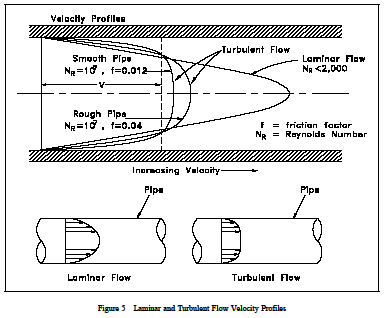Actually a wider diameter feed line will make a lot of positive difference. All the energy in your system (suction and pressure) comes from the pump, and for a given flow velocity, the smaller the diameter, the greater the shear stress and the more pressure and energy lost in getting the fluid from your sump to your pump. Which is what viscosity is; it’s a measure of resistance to shearing.
This is so, because the fluid in contact with the pipe walls does not move (known as the zero slip condition), so the faster the flow, the greater the difference in speed between the fluid in the centre and the fluid at the wall, and narrower the pipe the steeper the velocity gradient between the stationary fluid at the wall and the maximum velocity fluid in the centre, and hence the greater the shear stress.
Here’s a photo that shows the typical velocity profile of pipe flow:

As you can see, for a given flow velocity, the sharper and pointer the profile, the more shearing, the more energy and pressure loss. The issue is compounded for a fixed flow rate as decreasing diameter requires increasing maximum velocity (a longer parabola).
Shear stress is what results in the pressure gradient along a pipe. I’ve added separate pump tube and pipeline diameters to the calculator, so you can see what a difference it makes.
Keep in mind it’s a general calculator. It uses the pump details to calculate a flow rate, but you could equally just type in any flow rate you want and it will tell you how much power you need. You can also use it to calculate sections of the pipeline and then add them up, and it will tell you the pressure drop (which is the pump outlet pressure) - and as long as there are no branches, in your pipeline the flow rate will be the same everywhere (conservation of mass, and assuming your fluid is incompressible, which is pretty true for most liquids).
The one important thing it doesn’t account for is bends in the pipeline, but as a very rough rule of thumb just add 15-20% for these. In a more thorough analysis where you know the actual pipeline layout you would include additional head loss factors for bends and joints. These have been determined empirically so you just have to look them up.
The other big problem with glycerin is it’s viscosity is very sensitive to temperature. I got the 300W with pure glycerine at a temp of 18°C - not unreasonable first thing in the morning.
Bumping the pipeline diameter up from 12mm to 50mm will land you a massive drop in flow resistance.
It’s important to keep in mind that ‘suction’ doesn’t exist - liquids and gases cannot pull, they can only push. There’s only high pressure and less high pressure ptessure down to 0 - which means you’re limited to a ‘suction’ of atmospheric pressure plus a bit more depending on how high your sump level is above your pump.
In order for any real world fluid to flow through a pipe, there must be a higher pressure at the inlet than the outlet. This means if you’ve got a pipe feeding your pump, the pressure at the pump inlet is lower than it is at the sump. The longer and narrower the feed pipe, the lower the pressure at the pump inlet.
Positive displacement pumps, like peristaltic pumps, add energy to the fluid primarily by increasing the pressure of the fluid. To help your pump out as much as possible you want to maximize the available pressure at the pump inlet - that means run the biggest fattest, and shortest pipe you can to the inlet, so that it loses the least amount of pressure flowing from the sump to your pump.
Ideally, from an energy efficiency point of view, have no pipe at all to your pump - instead, submerge it.
The take home message here is bigger is better. Get a much more powerful motor than you think you’ll need, and for a given volumetric flow rate bigger pipes are more energy efficient.









